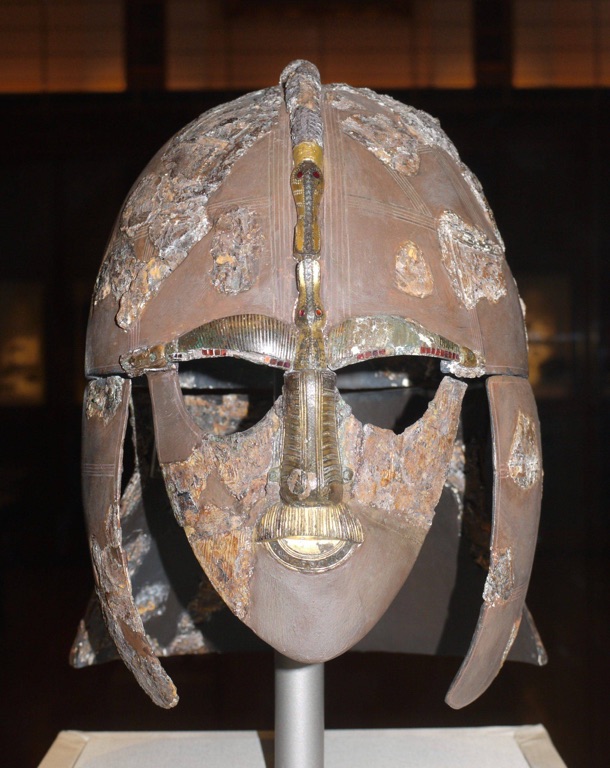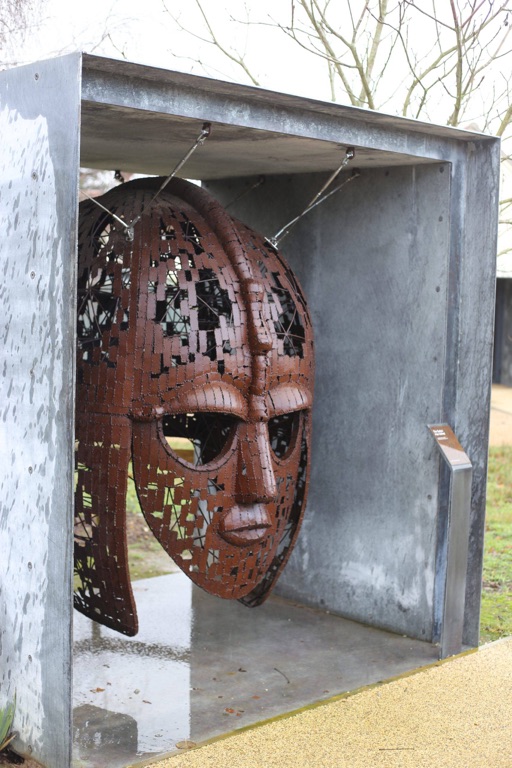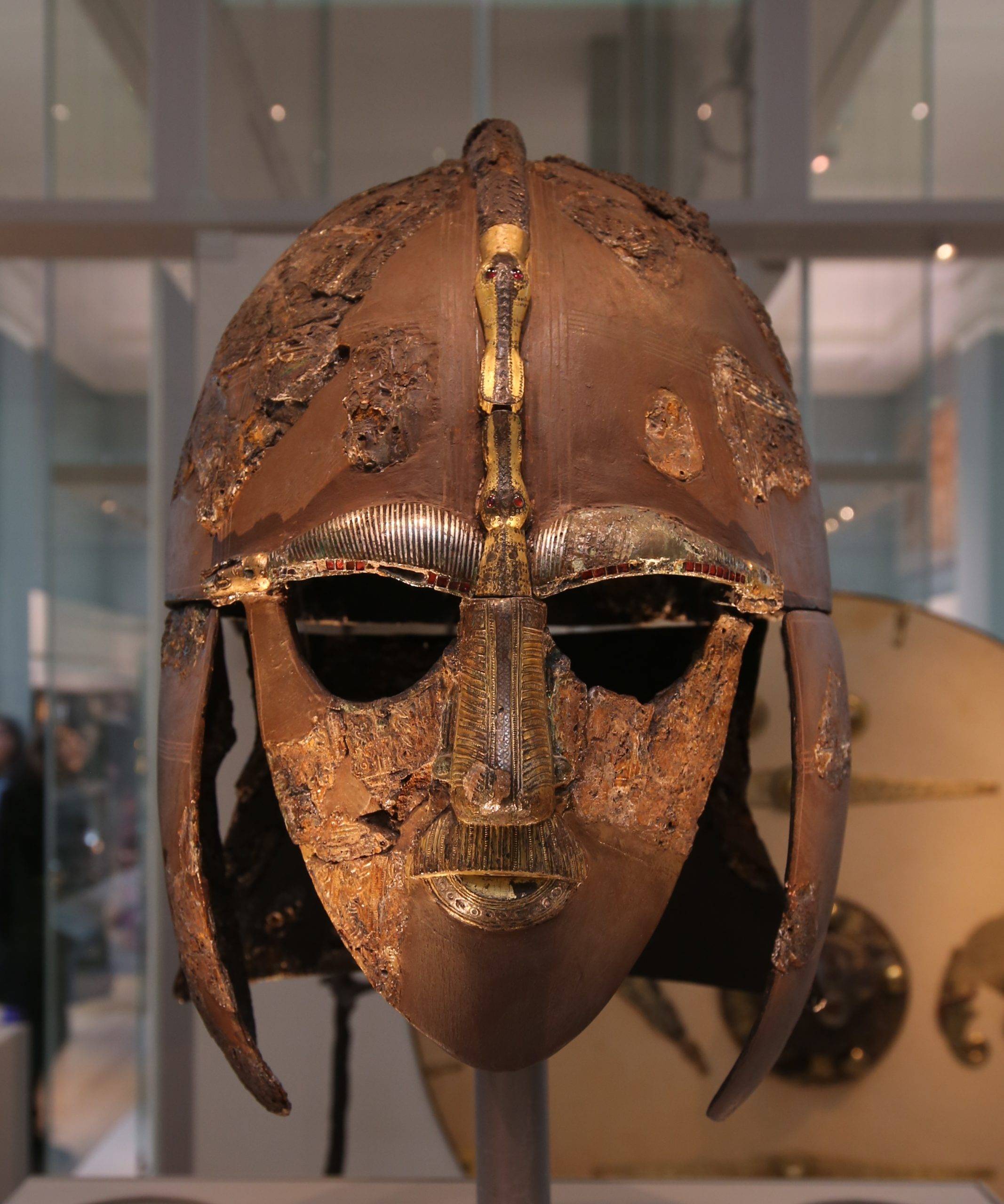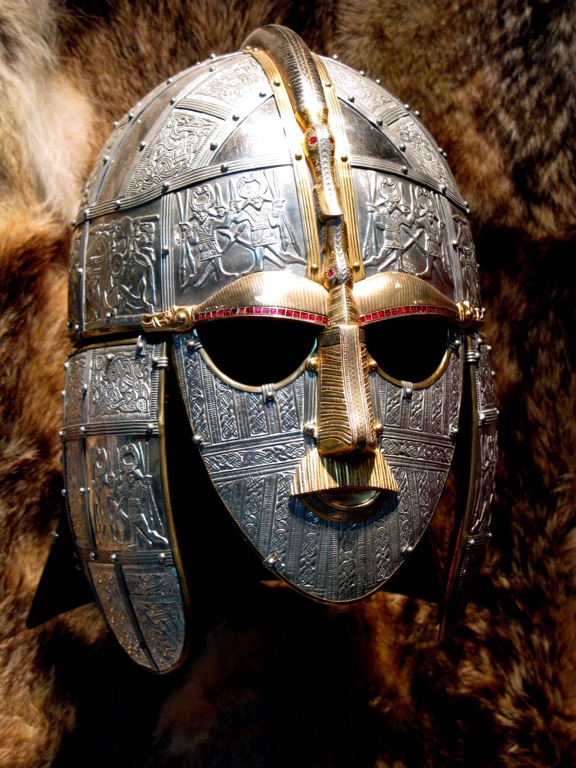Located in the heart of Suffolk, England, the Sutton Hoo Helmet is a remarkable artifact that has captivated historians and archaeologists alike. This iconic Anglo-Saxon helmet was discovered in the Sutton Hoo ship-burial, one of the most significant archaeological finds in British history. The helmet’s intricate design and rich symbolism offer a fascinating glimpse into the past, shedding light on the culture, beliefs, and craftsmanship of the Anglo-Saxon era.
Get your dose of History via Email

Historical Background
The Sutton Hoo Helmet was unearthed in 1939 during the excavation of a burial mound at Sutton Hoo, near Woodbridge, Suffolk. The burial site, believed to date back to the early 7th century, is thought to be the final resting place of an Anglo-Saxon king, possibly Raedwald of East Anglia. The helmet, along with other artifacts found in the burial, provides a rare and valuable insight into the sophisticated culture of the Anglo-Saxon elite during this period.

About the Artifact
The Sutton Hoo Helmet is a masterpiece of early medieval craftsmanship. Made of iron and tinned copper alloy, the helmet weighs approximately 2.5 kg and stands about 31.8 cm high. It is composed of several pieces, including a cap, a face mask, a neck guard, and cheek pieces, all of which were originally held together by rivets. The helmet is adorned with intricate ornamentation, including panels depicting warriors and animals, which were created using a technique known as repoussé. The materials used suggest that the helmet was not just functional but also a symbol of status and power.

Theories and Interpretations
While the Sutton Hoo Helmet’s primary function was likely protective, its elaborate design suggests it also served a ceremonial or symbolic role. The helmet’s imagery, which includes two warriors flanked by dancing warriors and a figure with a spear fighting a dragon, is thought to represent heroic or mythological scenes from the Anglo-Saxon or Germanic tradition. The helmet’s construction and design have also led some scholars to suggest connections with Swedish helmets of the same period, indicating possible cultural or trade links between the Anglo-Saxons and Scandinavia. Radiocarbon dating and stylistic analysis of the artifacts found at Sutton Hoo have helped establish the site’s age and significance.
Good to know/Additional Information
The Sutton Hoo Helmet was initially found in hundreds of fragments and was painstakingly reconstructed by British Museum conservators. The first reconstruction, completed in 1947, was later found to be inaccurate, and a second, more accurate reconstruction was completed in 1971. Today, the helmet is one of the most iconic artifacts from the Anglo-Saxon period and a highlight of the British Museum’s collection. A replica of the helmet is also on display at the Sutton Hoo visitor center, allowing visitors to appreciate this remarkable artifact in its original context.


